Hang Va - A Unique Underground Cave In Quang Binh Vietnam
Hang Va is one of the caves located in the core zone of the Phong Nha-Ke Bang National Park in Quang Binh Province, Central Vietnam. Located about 4 km from Km 28 of the Ho Chi Minh Highway, it is considered to be one of the most unique of all the caves discovered by caving experts in Phong Nha-Ke Bang. Hang Va is special for its one of a kind cave formation: tower cones, which have a complex and unique structure, and are present in such large numbers.
Hang Va is located deep within the national park and about 50m from the exit of the largest cave in the world - Hang Son Doong. Scientists believe that these caves are hydrologically connected.
The Hang Va Expedition and other adventure travel locations are licensed to Oxalis Adventure Company (the only company allowed to operate) by Quang Binh Province, and may operate from January to August annually, taking only 700 to 800 customers a year.
For those who are passionate about cave photography, interested in geomorphology, and want to experience camping deep in a valley surrounded by a chain of limestone mountains, the Hang Va Cave Expedition is a trip not to be missed. Guests can also experience cave trekking and the use of safety equipment to cross some technical sections in Hang Va.
History of discovery and origin of the name Hang Va
The name Hang Va was given by Mr. Ho Khanh based on the name of the area. It is known that since a long time ago, this area has been called the Va jungle by the ancestors (the reason why it has this name is still a mystery). After his many trips to the jungle, Ho Khanh also became familiar with this area.
Mr. Ho Khanh discovered a cave with a small river flowing inside in 1992 and reported it to the exploration team during the expedition to find the exit of Son Doong. However, due to time constraints, the team of experts could not investigate it at the time. Therefore, they planned a short survey to check it out, knowing that any river caves in the area are usually very special. As expected, Hang Va did not disappoint them.
After surveying and measuring the cave, Ho Khanh named it Hang Va, as it is situated in a region known to many as the Va jungle since ancient times.
Hang Va was first discovered by Ho Khanh in 1992 and was surveyed and measured by speleology experts from the British-Vietnamese Cave Expedition Team in 2012.
Surveys of Hang Va
In 1992, Hang Va was discovered by Ho Khanh during his annual trip to the jungle.
In 2003, The British Vietnam Caving Expedition Team explored and surveyed Hang Nuoc Nut, first discovered by a local man named Nguyen Huy Du in Phong Nha. He then led the team to the cave and they surveyed it. The underground cave has a low entrance, which soon enlarges into a large cave passage with beautiful stalactites and stalagmites, large high columns reaching to the ceiling of the cave and a series of sparkling stalactites. The widest part of Nuoc Nut Cave is up to 50 meters and there is a stream running through Nuoc Nut Cave which has a total length of 2.2km.
In 2012, The British Vietnam Caving Expedition Team explored Hang Va. The downstream sump almost certainly connects with the lower stream passage of Nuoc Nut Cave. Near to this sump there is also a small water filled passage which is believed to be connected to the Passchendaele Passage in Hang Son Doong.
In 2016, the Hang Va Cave Expedition tour officially started.
In 2017, a tour guide and a caving safety assistant accidentally found a short passage. This passage connects Hang Nuoc Nut and Hang Va. With a total length of 150 meters, the passage contains some typical cave formations, and is often blocked by sand following the flood season. During the tour season it is normally a dry passage.
Location of Hang Va in Quang Binh
Hang Va is located in the core zone of Phong Nha-Ke Bang National Park, in Quang Binh Province. It is located on km 28 of the Ho Chi Minh Trail. Hang Va is located in a small valley surrounded by high limestone mountains.
If you want to successfully complete the expedition to Hang Va, you will trek over rocky and slippery terrain, wade and swim in the caves, wriggle and crawl through the connection, and use harnesses for the technical sections.
Phong Nha - Ke Bang National Park is a natural world heritage site
Phong Nha-Ke Bang National Park consists of a complex karst landscape, which includes very large caves and underground rivers.
Phong Nha-Ke Bang National Park is one of the largest national parks in Vietnam and has been recognized by UNESCO twice as a World Natural Heritage Site, dubbed the "Cave Kingdom of Vietnam."
In 2003, UNESCO recognized Phong Nha-Ke Bang National Park as a World Natural Heritage site based on its geology and geomorphology, and on July 3, 2015, it was recognized again as a World Natural Heritage site based on its biodiversity.
Adventure Tourism activities
Oxalis Adventure Company was approved and authorized by the Provincial People's Committee of Quang Binh, and Phong Nha - Ke Bang National Park Management Board, to be the sole company to operate adventure tourism and cave exploration in Hang Va from 2016 with a maximum annual number of 700 to 800 guests. The Hang Va Expedition tour price is 8,000,000 VND (US$334) per guest.
Visitors should book the Hang Va Expedition tours of Oxalis to explore Hang Va. Oxalis organizes Hang Va Expedition tours from January to August every year, which is considered the best time to visit Hang Va (tours are not operated during the rest of the year and during the rainy season).
The Hang Va tour includes 2-day trekking, 1-night camping in the forest, so the items you need to bring are quite simple. If you are concerned about what to wear for Hang Va trek, you can learn more here: "Suggested packing list".
Customers participating in the Hang Va Expedition tour also contribute to the cave conservation and protection of the forest environment in the core zone of Phong Nha - Ke Bang National Park via the purchase of tickets and environmental service fees.
Learn more about Hang Va Expedition Tour at here.
Geology and geomorphology of Hang Va
Hang Va is located in Tan Trach Commune, Bo Trach District, Quang Binh Province. It is located in the heart of the Phong Nha-Ke Bang National Park, and is connected to the limestone wall of Son Doong Cave. Hence, Hang Va of Vietnam is part of the oldest karst mountain system in Asia, formed about 400-450 million years ago. Cave experts believe that, with an age of about 2-3 million years.
According to scientists, Hang Va is relatively young and was formed about 2-3 million years ago. Hang Va was formed by the erosion of the Khe Um stream over millions of years. The water, which contained carbonic acid, seeped and flowed through the limestone, dissolving the calcium and formatting Hang Va.
Inside Hang Va is an active underground river. This river may be water flowing from Khe Um.
Hang Va is a river cave with some unique calcite formations. There are many common calcite formations, but visitors can expect to see the numerous tower cones that have formed in the giant gour or rimstone pools, which makes Hang Va unique. Most of the calcite towers have very steep sides, with the tallest reaching about 2 meters high. Most calcite towers reach the same height, which is also the height of the rimstone dams.
These formations are rare, especially with such a large size and number. They are formed by calcium carbonate similar to any other cave formations in other caves.
Raft cones and tower cones
No one can explain exactly how these tower cones formed, although the cones of Hang Va have many of the features of raft cones. Calcite rafts form as a thin layer on the surface of cave pools. They sink into the pool either under their own weight when they grow too heavy, or when hit by a drop of water falling from the cave roof. A repeated drip from the same place sinks a number of rafts that then build up on the pool floor to create a cone, which may reach the level of the water surface. These are known as raft cones because they are cones formed from calcite rafts.
Steep-sided cones are more often called tower cones. It is not known exactly why some cones form very steeply, and others with a shallower slope.
A noticeable feature of the tower cones in Hang Va, and those in many other caves, is the outside layer of calcite that gives them a knobbly appearance and also hides any structure remaining from the original piles of rafts.
Tufa towers and geysermites
The knobbly outer surface and very steep profiles of the cones in Hang Va are similar to the features of tufa towers. These form over vents of geothermally warmed water, full of dissolved calcite, that lie in the floors of lakes and cause rapid, underwater precipitation of the calcite. Again they are exposed only when the water level drops. The most famous examples are found at Lake Abhé (Djibouti) (Waltham, 2005), with many structures having heights exceeding 20m. There is however, no evidence of geothermal activity in Hang Va.
So far, the tower-shaped structures in this cave are the only examples in Vietnam, but new cave discoveries may reveal new examples in the future.
Whether you prefer long treks, camping in a cave, sleeping under the stars in the jungle, swimming underground in river caves, explore the huge dry caves or just taking an exploratory day trip, Oxalis Adventure Tours can provide the right amount of adventure just for you.



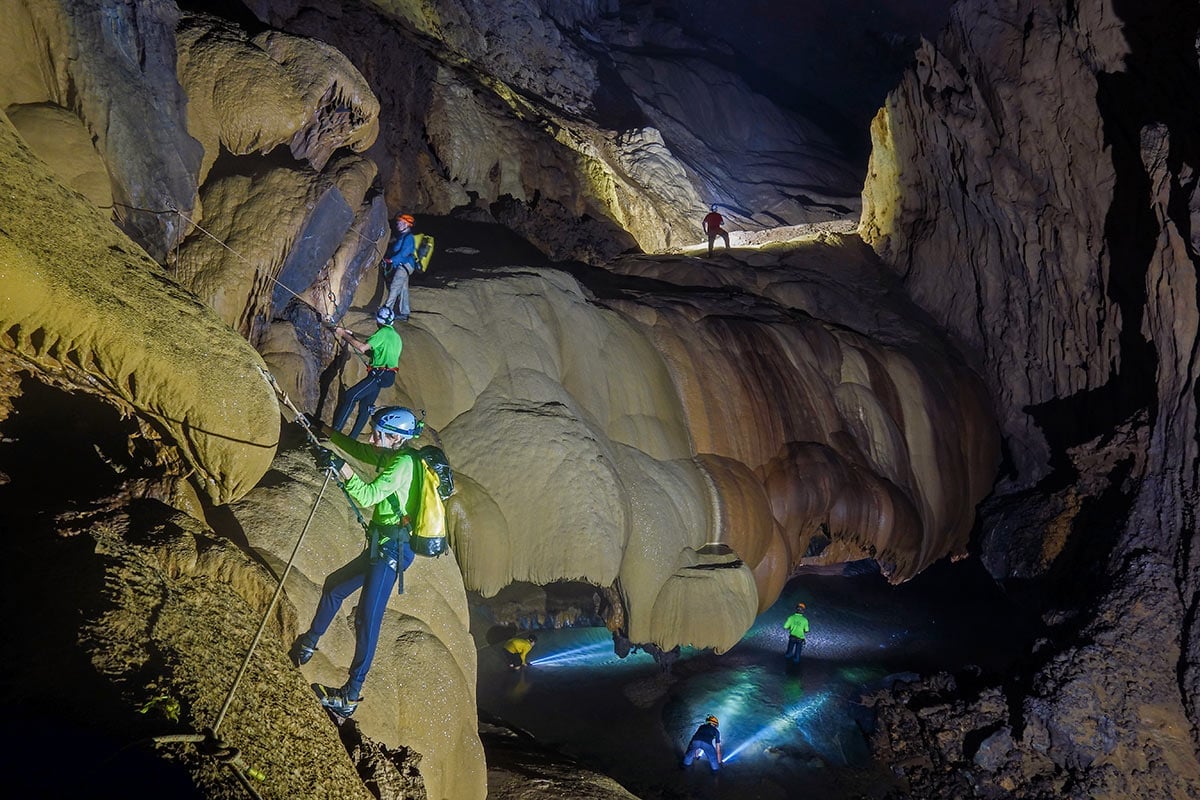
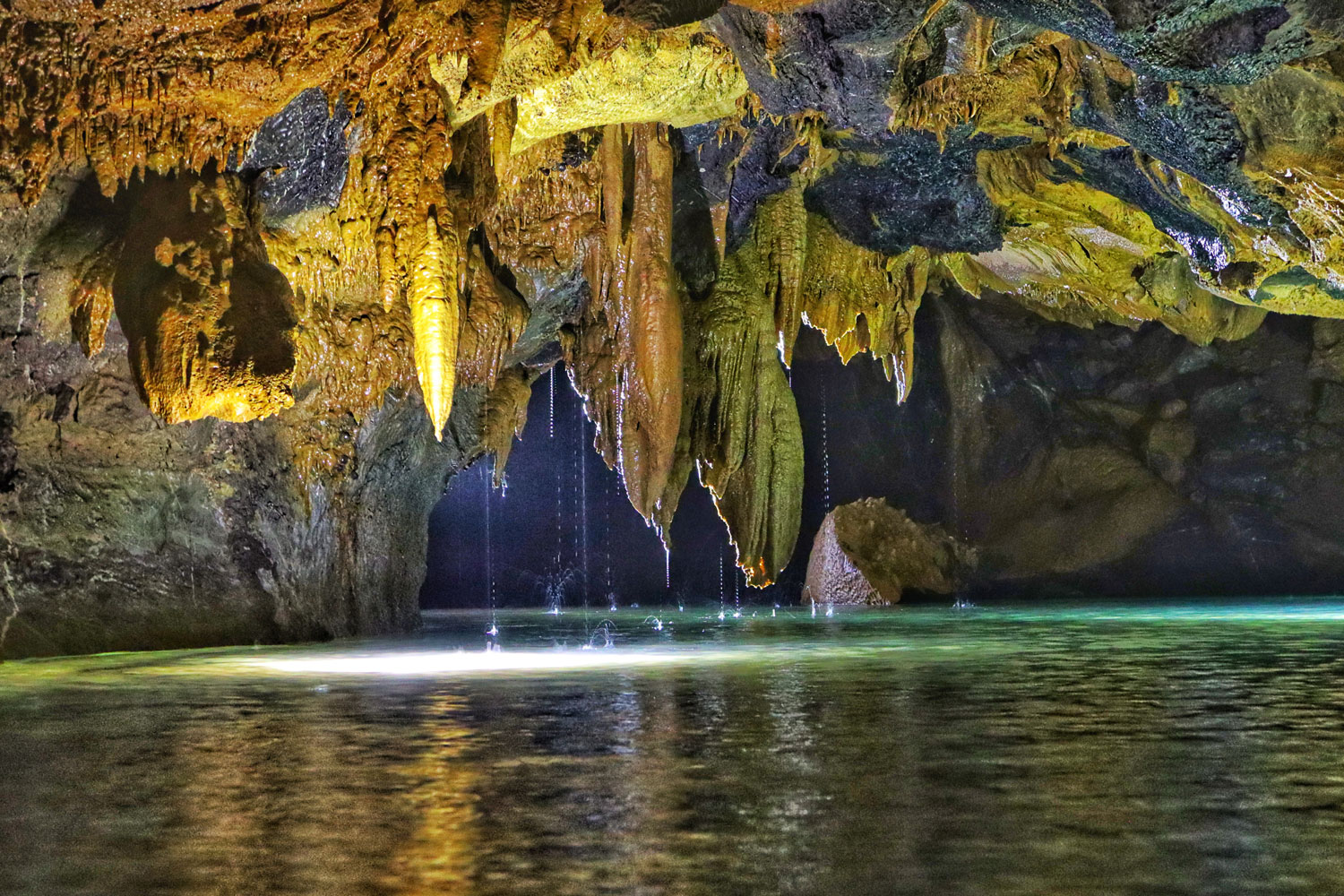
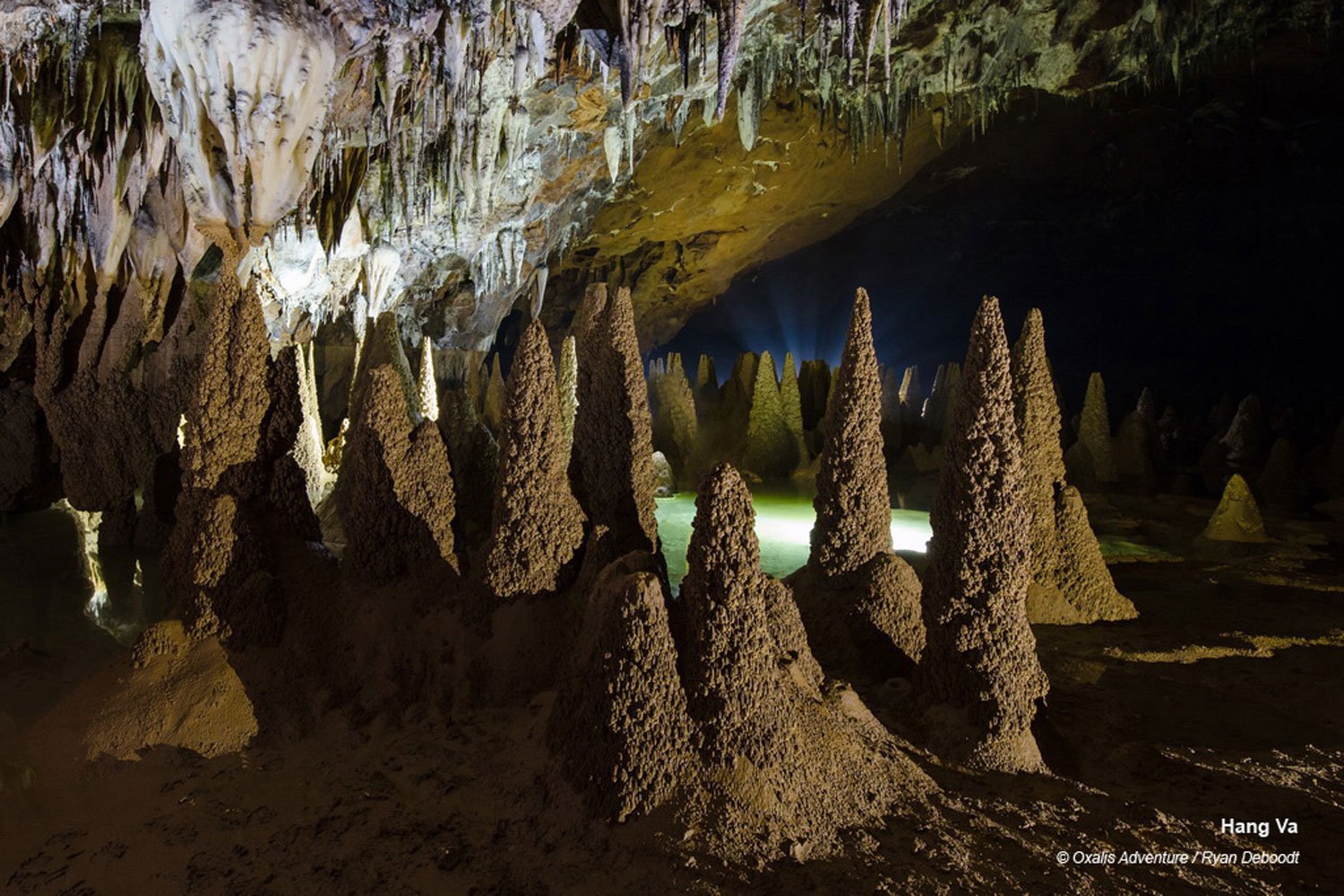
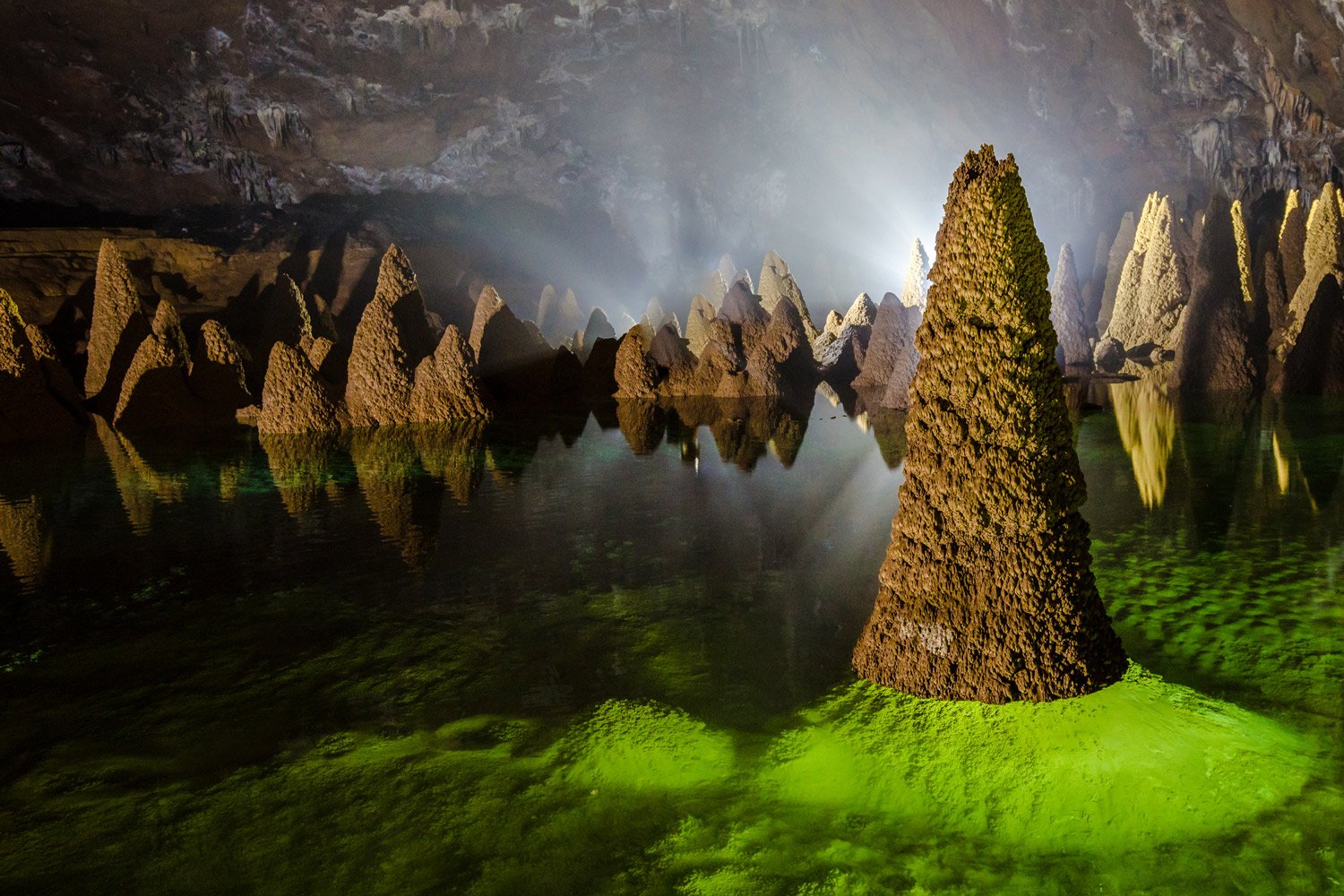
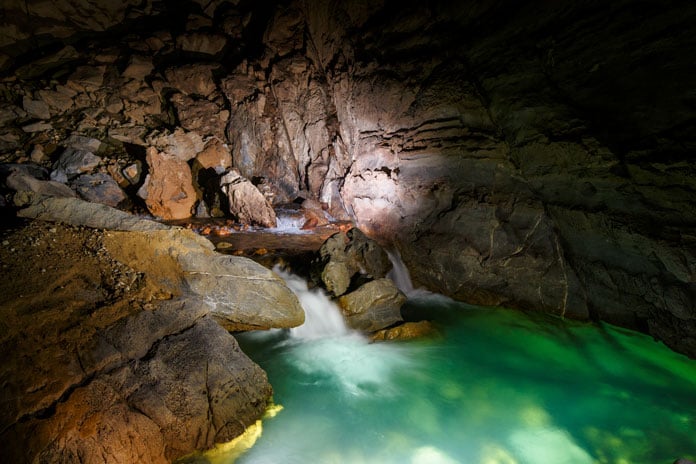
__637740499994967442.jpg)
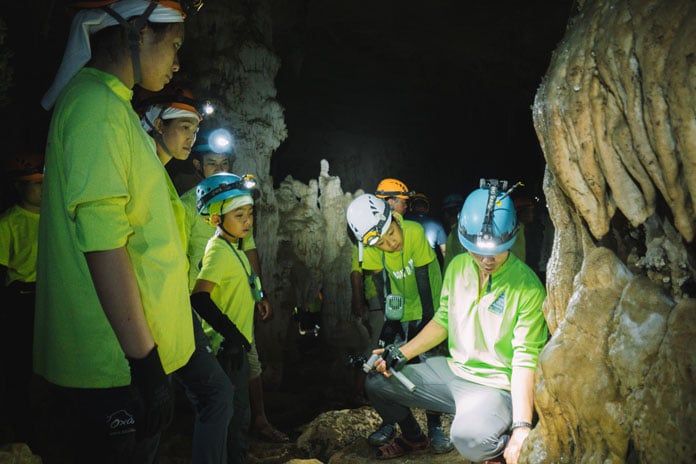
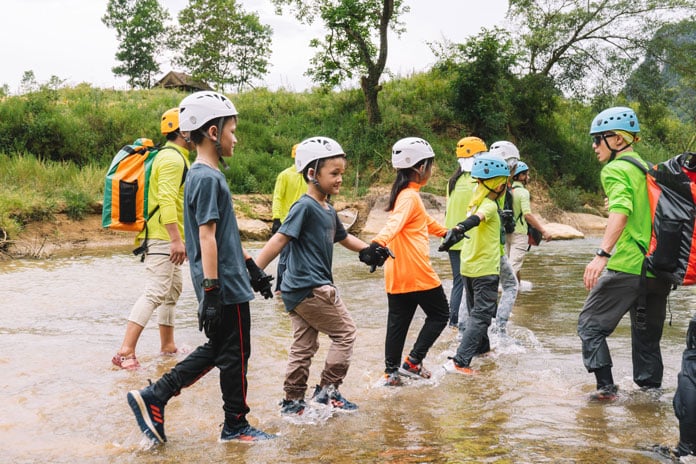
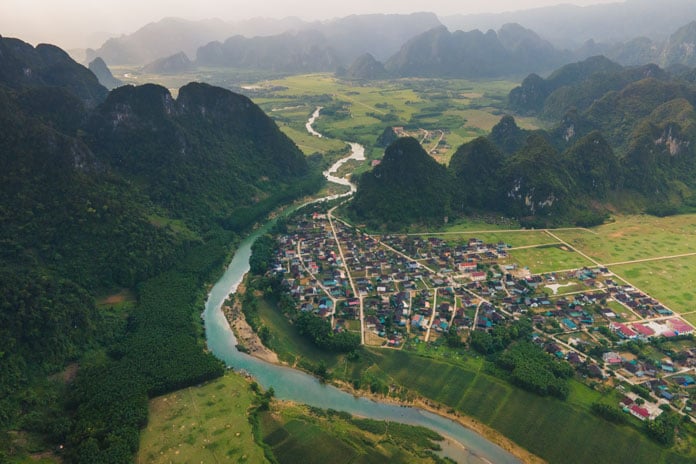
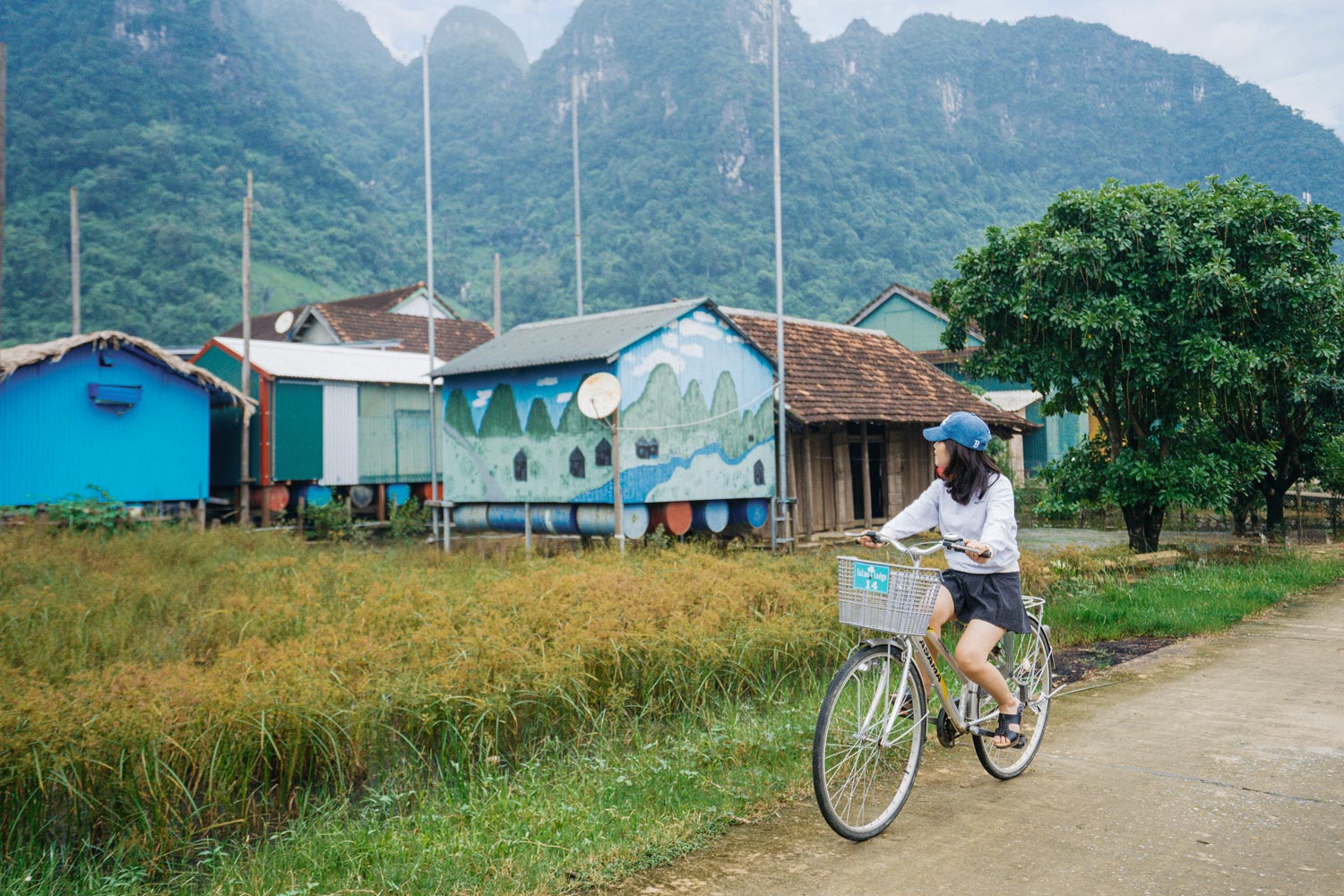
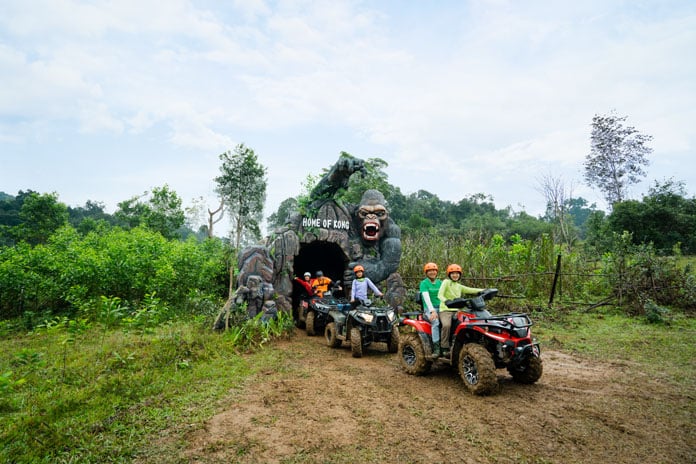
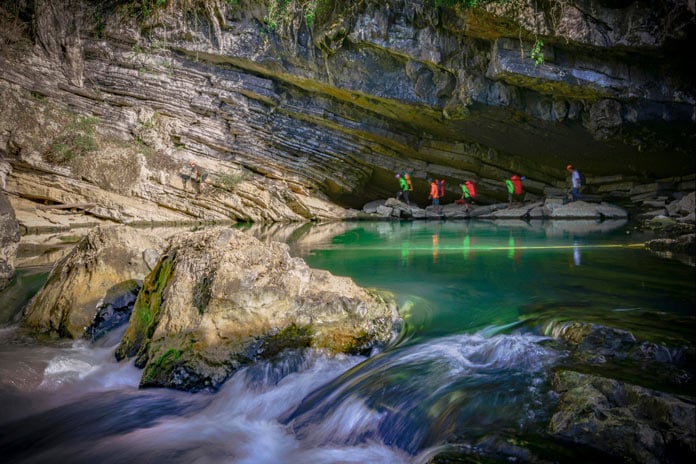
__637051767008903435.jpg)
__637051765075307793.jpg)
__637051774329206026.jpg)
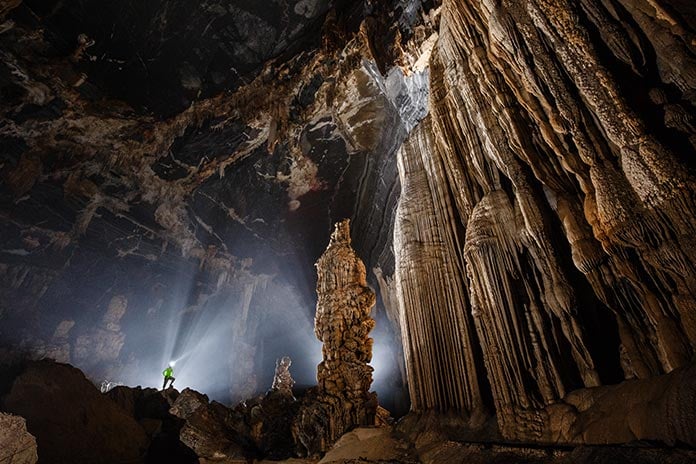
__637051782550081035.jpg)
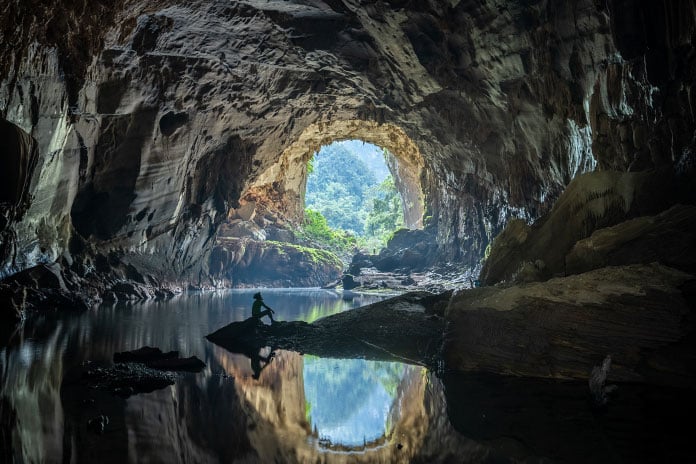
__637051777074859032.jpg)
__637051780703588520.jpg)
__637051781488596056.jpg)